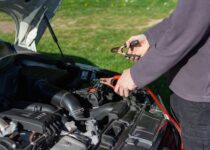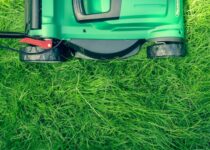What Are Small Spring Loaded Casters?
When looking for small spring-loaded casters, you should choose one with an initial force of 250 pounds. These casters deflect as the load increases, reducing the amount of noise produced. In addition, you should look for a spring configuration that minimizes noise during production. This way, you can prevent excessive noise from disrupting your production.
Limitations
When selecting small spring-loaded casters, keep in mind the weight limits and environmental conditions that may affect their performance. For example, improperly loaded casters will move unevenly and in unpredictable ways, which can damage the cart or payload.
The type of springs is essential in determining how well a spring-loaded caster will perform. You want the spring constant to match the weight of the load. If the spring constant is too high, the caster will deflect to the same degree as a spring with the same weight. On the other hand, a spring with too low a value may extend the shock and cause excessive vibration.
Benefits
Among the many benefits of small spring-loaded casters is that they are relatively quiet. They typically have a 250-pound initial force and deflect as the load increases. Additionally, they reduce noise during production, as the pre-load generally is much lower. These factors contribute to the low-noise performance of these casters. However, small spring-loaded casters are not without disadvantages.
While the size of small spring-loaded casters is a crucial consideration, the overall benefits of the product should outweigh their weight. Typically, the springs used to manufacture small casters are prone to variations. However, because they increase in diameter as they compress, coil-bound casters tend to be softer than beam springs and can handle high-impact loads without causing damage to the load or the cart.
Pre-loading
If you’re buying small spring-loaded casters, you need to know their capabilities. The pre-load of a spring-loaded caster is the initial force applied to the caster, usually 250 pounds. It is also the critical point at which the spring deflects the least. A smaller pre-load means less deflection, which means less noise during production.
A pre-loading element is designed to function predictably when deflected by an axial load. A spring’s deflection is linear and directly proportional to the amount of force applied to it. A full deflection occurs when the spring is fully deformed. After this point, no other force will change the pre-load. You can significantly extend the casters’ lifespan.
Stainless Steel
Stainless Steel small spring-loaded casters are an excellent choice for several applications. Made of high-quality material with low carbon content, they provide excellent corrosion and wear resistance. In addition, the steel is made with a thin layer of chromium oxide, which forms on the surface to act as a self-healing coating. Depending on the application, these casters can be rigid or swivel, and each model has a different wheel size, bearing type, and swivel seal.
When choosing spring-loaded casters, you want to make sure that the wheels have the right amount of springs. The spring constant will determine how much deflection is necessary. Too high or too low a spring will result in the cart not absorbing enough shock, causing excessive vibration and fatigue. Spring-loaded casters are also ideal for heavy or irregularly-surfaced applications, such as factories or warehouses.
Applications
Small spring-loaded casters provide smooth movement and enhanced comfort when moving equipment. They reduce noise and deflection and are ideal for areas with uneven flooring or highly reactive loads. Moreover, spring-loaded casters are also aesthetically pleasing and are compatible with most kinds of materials. If you’re looking for suitable casters for your needs, here are some tips to make the selection process easier. Here are some typical applications of small spring-loaded casters:
Environmental conditions may also affect the performance of small spring-loaded casters. In wet environments, casters may suffer from corrosion, which weakens their components and increases their chances of failure. Factors affecting caster performance include surface characteristics, debris, and corrosive vapors. Choosing the right small spring-loaded caster is crucial for your equipment’s and your employees’ durability. If you want to avoid costly downtime, consider using the correct type of caster.


